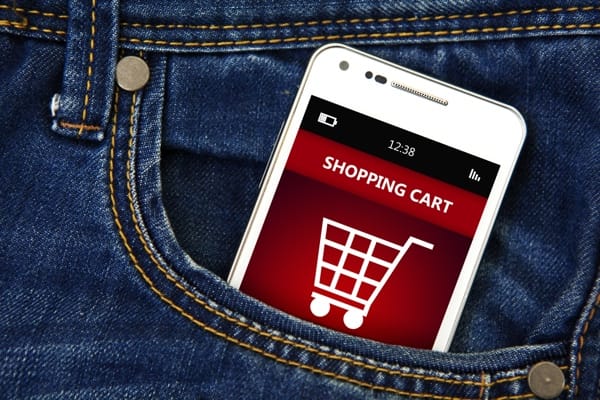How mobile is revolutionising shopping

Over the past few years, the way we communicate has been revolutionised by advances in mobile technology, and the ubiquity of smartphones and other devices. The way we shop has also changed forever, as retailers embrace new ways to optimise their products, and shoppers use these tools to research, compare and purchase goods.
Mobile has benefits for shoppers and retailers
Shoppers can now walk down the aisles of stores with their smartphones, helping them to make better and more informed choices about purchases. Marketers and retailers also have better access to information about what is happening at stores as shoppers enter and leave, partly due to devices such as beacons and other presence technologies.
The smartphone is now an essential item that everybody carries with them (just like their keys and wallet, is a huge resource for brand discounts, and at-a-glance information about what is on offer at stores, enabling marketers to deliver brand messages at a specific point in time (instead of waiting for the shopper to leave).
Armed with mobile devices, consumers not only reap the rewards in terms of simpler, more powerful and efficient shopping, but can also help retailers better understand what is catching the eye of the busy shopper.
What do consumers enjoy about using mobile technology for shopping? This chart from Statista is a very telling set of statistics:
Besides using mobile apps in-store to augment the traditional shopping experience, shoppers are also using dedicated online shopping apps that are targeted for smartphones and tablets. Zalando [Google Play / App Store] is one such app that has capitalised on the success of mobile shopping, by offering a fully-featured fashion store with a huge selection of items (many more than could be viewed in a traditional bricks-and-mortar store). Such apps also have unique features that aid shoppers in finding items of interest – for example by scanning a barcode with their smartphone’s camera which then links to the product.
Deals on demand
Sites such as VoucherBin can be accessed anywhere by customers using mobile devices (customers can also directly search VoucherBin stores to find items for specific brands), which makes them accustomed to being able to quickly find money-saving deals at any time. For example, a consumer might visit a particular isle in a department store if they have a coupon for a specific brand on their mobile, or if they see a mobile ad that influenced them to buy that product.
Apps also have geofencing capabilities, which allows retailers to send customised push notifications when customers reach a predefined area. These notifications also may offer deals on products the moment a consumer enters the store. For example, McDonalds trialled such mobile technology, installing beacons initially in dozens of stores in the US, to offer thousands of redemption coupons. The result was a rise of more than 8% in sales of fast food items, which then prompted the company to expand its beacon programme to hundreds of restaurants.
Increasing brand loyalty
Through social media such as Twitter and Facebook, consumers are able to engage in conversations with brands with ease. Using hashtags, consumers can also help to promote a brand and generate a buzz that helps them spread their message; conversely, with the wrong hashtags, brands can appear to be insensitive. Consumers who are discussing the shopping experience on social media might be followed by retailers and marketers looking to seize an opportunity, to increase brand awareness and create dialogs with those shouting out their products.
In-store research
Consumers in stores can research any product at any moment, looking up reviews, prices, product information and more. Companies are even leveraging customers’ smartphone usage while they are shopping. For example, in the US, Walmart and Lowe’s provide mobile apps to help shoppers navigate their stores. But information can also flow both ways – brands can use shoppers for research on their products or competitors’ products. Smartphones themselves are powerful tools for research with photos, video, barcode scanning and mobile survey capabilities, that brands can use to get access to thousands of respondents to obtain insights into the shopping experience.
Final words
Mobiles are already helping consumers enrich their day-to-day shopping experiences – it’s all about convenience and access to the right information, at the right time. Besides browsing for products and conducting research, mobile payments are also starting to gain popularity, with Apple Pay perhaps the leader in terms of adoption.
But the smartphone is a tool not only for consumers, but for retailers and marketers too – in fact, it seems that everybody stands to benefit when mobile technology is used to augment the shopping experience.







